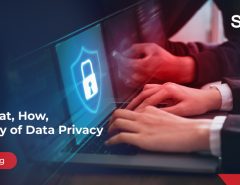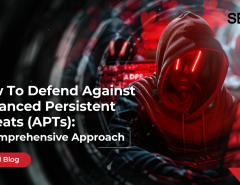Endpoint devices like PCs, Smartphones and USB drives usually have a lot of sensitive data stored within. Organizations with truckloads of corporate information and other confidential details need to ensure that unauthorized access to these data sets is negated. This is where Endpoint Encryption comes into the picture as it helps enterprises protect sensitive information making the same unreadable to the outsiders.
Be it conventional disk encryption or a process that involves securing removable media, Endpoint Encryption has many aspects to it which will be discussed moving further into this post. We will also address the recovery mechanisms and the myriad benefits associated with this form of device encryption.
Read: What is encryption and why it is important for your organization?
Deciphering Endpoint Encryption
When it comes to assessing endpoint security measures, encryption comes forth as the most potent tool. However, the existing concept is further segregated into Disk and Removable Media encryption, depending upon user preferences.
While disk encryption renders security to a hard drive including the likes of hibernation files, system files, and swap files, the latter offers endpoint security solutions to select data sets where only the contents are encrypted using passphrases and other measures. To be precise, removable media encryption thrives on the user action while disk encryption is more of a holistic approach to endpoint security.
Disk Encryption: Detailing the Process
When a device starts up, the operating system executes a boot sequence. A disk encrypted gadget has a modified bootstrap loader in place where the user needs to get authenticated at the start. Be it a simple passphrase or the two-factor authentication process, disk encryption is the software based program that works in cohesion with the system architecture. This involves filtering system files and the I/O operations pertaining to the concerned operating system.
When an authorized user accesses the file, the disk encryption algorithm backtracks and decrypts the data for seamless viewing. However, not a single bit of decrypted data is available on the disk and is rendered directly from memory.
Removable Media Encryption: Understand the Basics
Unlike devices depending on boot sequences, removable media encryption is functional when removable storage options are concerned. The existing encryption software works on stored files which are secured using certificates, passwords or shared keys. This mechanism is typically governed by user actions, policies or even Data Loss Prevention semantics. During data or file transfers, the sensitive information is usually encrypted and not blocked allowing businesses to function in a secured manner.
What are the Recovery Mechanisms?
The concept of endpoint encryption works both ways with decryption being an integral part of the process. However, there can be instances when users forget the associated paraphrases and the company providing endpoint security solutions helps them with self-recovery. For disk encryption, the recovery mechanism includes a local administrator key or a recovery token assisting with self-recovery at the boot time.
Apart from forgetfulness, hardware failure and even virus attacks can be the reasons behind the initiation of a recovery mechanism. For removable file encryption, there are two recovery mechanisms on offer. The first option fits in for files that are encrypted using specific workgroup keys. In such cases, data sets can be decrypted by inserting the device into an endpoint gadget with the same workgroup key. The other alternative involves using a copy of the recovery certificate clubbed with the private administrator key.
Read: How Ransomware works: Understanding the strategy behind cyberattacks
Bottom-Line
When it comes to addressing endpoint security options, DNA scans, behavioral detection, and anti-ransomware solutions come forth as the predominant concepts. However, endpoint encryption is more of a cohesive approach to security, with its elementary roots spread far and wide. Be it safeguarding installed applications from unauthorized access or offering protection against phishing attacks— an endpoint encryption ecosystem is something every organization needs to embrace at the earliest.
As an IT security partner for your business, Seqrite provides comprehensive endpoint security from advanced cyber threats. To know more, visit our website or




